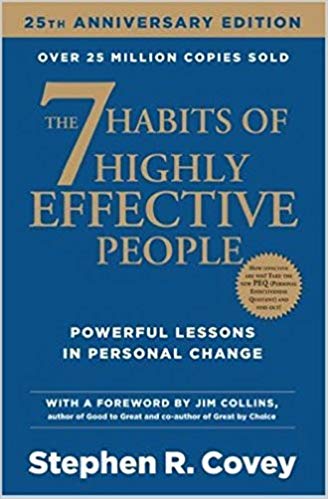

This article is an excerpt from the Shortform summary of "The 7 Habits of Highly Effective People" by Stephen Covey. Shortform has the world's best summaries of books you should be reading.
Like this article? Sign up for a free trial here .
What is a life mission statement? What should your mission statement be based on? How do you develop one?
A life mission statement is essentially a statement of your purpose, priorities, and core values. In his book The 7 Habits of Highly Effective People, Stephen Covey says that your personal mission statement should be informed by your personal paradigm—the lens through which you see the world.
Continue reading to learn how to create a personal mission statement, according to Stephen Covey’s model.
Developing Your Life Mission Statement
If you create a life mission statement that centers around your values at the core of who you are and who you want to be, it will guide you through the many phases and changes in your life. In fact, crystallizing the changeless core of who you are actually helps you adapt to change, because it reinforces such a secure sense of self that you won’t be threatened by changes around you.
When you sit down and think about how to create a life mission statement, start by looking at the most basic paradigms that dictate how you see the world. As you examine these paradigms, they’ll reveal your innermost values and principles. Stephen Covey’s personal mission statements are meant to reflect these paradigms.
Each person’s life mission statement will be distinct because everyone is unique and has individual experiences; rather than inventing your mission or emulating someone else’s, try to find your mission through self-examination, reflection, and honest assessment of your unique strengths and values.
The process of writing your life mission statement requires deep introspection and careful thought. Allow ample time for this — it may take weeks or months to take an honest and thorough look at your paradigms and driving forces. The process itself is just as important as the final result, because it makes you think through how you want to live your life and what actions reinforce that.
As you develop your life mission statement, it helps to identify the many roles you have — spouse, son/daughter, brother/sister, father/mother, friend, professional, individual — and create goals for each role. If you don’t parse out your vision and goals to address each of your roles, it’s easy to focus your mission statement too heavily on one area of your life and neglect others; you may accidentally make a mission statement too centered on work accomplishments and lose the balance in your goals that reflects a balanced life.
Effective goals should focus on the end result you want, your destination, rather than the route to get there. Once you’ve identified your destination, then you can figure out a path to reach it — and your personal mission statement will help you know when you’ve arrived — but you must begin with the end in mind.
Checklist: Create Your Own Life Mission Statement
Habit 2 explains how you can develop a personal mission statement as a first step toward creating your own destiny. Follow these steps to practice some of the techniques discussed in Habit 2.
- Imagine yourself at the funeral of a loved one. Visualize the scene, see your friends and family filing in as they grieve. Picture yourself approaching the casket, and when you get there you discover it’s your funeral. Imagine what your family members, your coworkers, and your friends will say about you and your life. Write down what you would want them to say about the person you are and the life you lead.
- Think of a project you’ll begin working on soon. Before you start it, make your first creation of the project—write down what you want the final product to be, and what steps you’ll need to make to achieve that.
- Write down the roles you have in your life.
- Review the different centers discussed earlier (principle, spouse, family, money, etc.) and circle all that you identify with. Think about your life and how these values impact your decisions and actions. Are you satisfied with your centers and their influence on your life.
- Start a habit of jotting down notes, ideas, and quotes that you might want to use in your personal mission statement.
- Set aside time in your schedule to work on your personal mission statement.
- Explain the principles of Habit 2 with your family or work team, and work on developing a group mission statement. Be sure to involve everyone in the process, and allow people to share their thoughts and priorities as you develop a final product that everyone feels committed to and invested in.
———End of Preview———

Like what you just read? Read the rest of the world's best summary of "The 7 Habits of Highly Effective People" at Shortform . Learn the book's critical concepts in 20 minutes or less .
Here's what you'll find in our full The 7 Habits of Highly Effective People summary :
- How to prioritize the hundred tasks you have to focus on the one or two that really matter
- The right way to resolve every disagreement and argument
- How to avoid burning out and succeed over 20+ years






